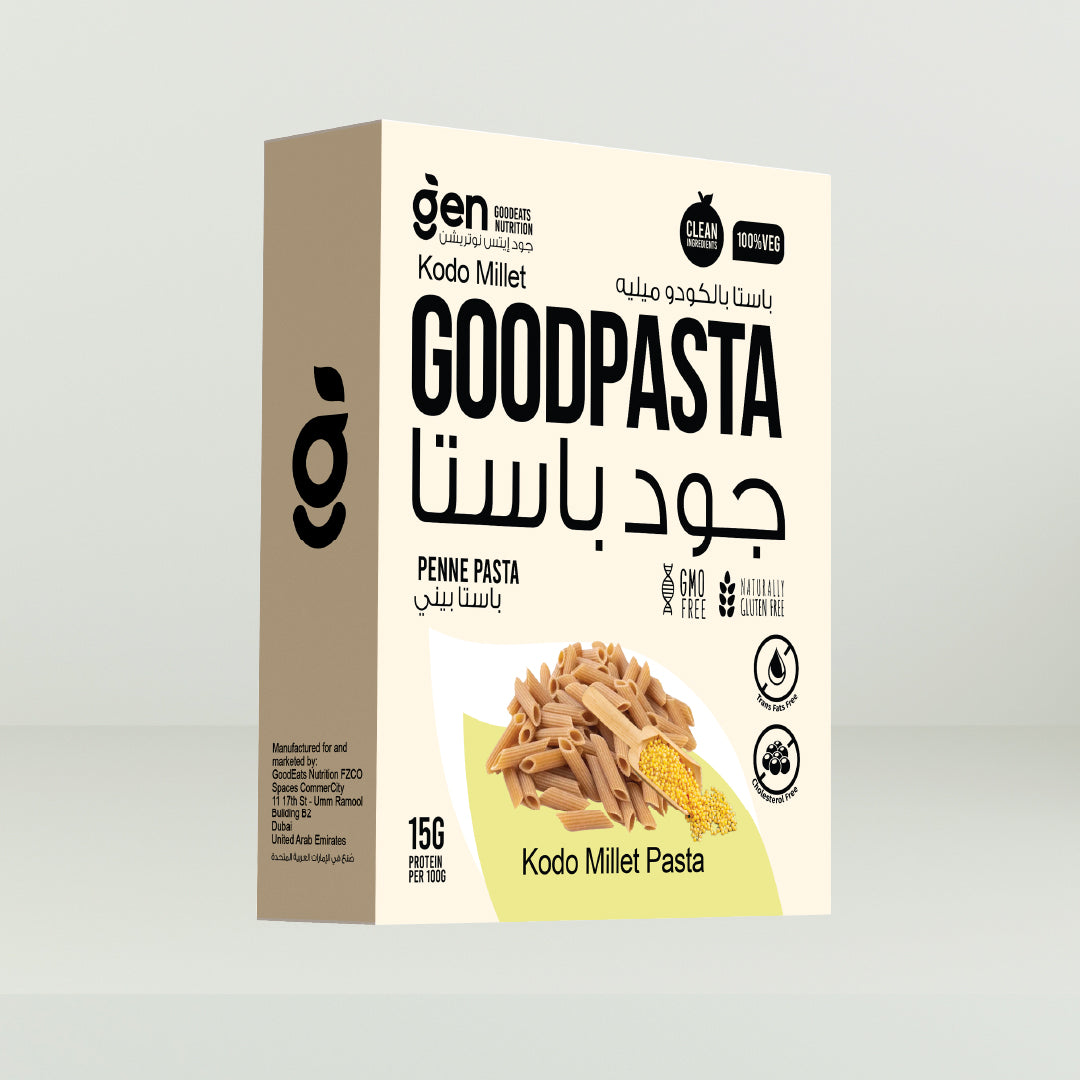In today’s fast-paced world, where processed foods and refined grains dominate our diets, nutritional deficiencies have become all too common. Modern lifestyles demand nutrient-dense, sustainable, and wholesome food choices—making millets and supergrains the need of the hour. Packed with fiber, protein, essential minerals, and antioxidants, these ancient grains offer a powerful alternative to conventional staples.
In this blog, we’ll be exploring five of the best millets and supergrains that can transform your diet and your health. Let’s have a look at their incredible benefits—better digestion, sustained energy, and improved heart health—along with easy and delicious ways to include them in your daily meals.
What Are Millets and Supergrains?
Millets are ancient, nutrient-dense grains cultivated for thousands of years. Naturally gluten-free and rich in fiber, protein, and essential minerals, they are known for their ability to thrive in harsh climates, making them a sustainable food choice. Some popular millets include Foxtail Millet, Kodo Millet, Finger Millet (Ragi), Barnyard Millet, and Pearl Millet (Bajra).
Supergrains is a broader term used for nutrient-rich grains that offer superior health benefits. These grains, including millets, are packed with vitamins, minerals, antioxidants, and essential amino acids. Amaranth, Quinoa, and Sorghum (Jowar) are some well-known supergrains that support digestion, energy, and overall well-being.
Both millets and supergrains are excellent replacements for refined grains, helping you achieve a balanced, healthier diet.
Why Millets & Supergrains Are the Need of the Hour
With modern lifestyles becoming increasingly fast-paced and dependent on processed foods, our diets often lack essential nutrients. The rise in lifestyle-related health concerns—such as obesity, diabetes, and gut issues—makes it crucial to switch to whole, nutrient-dense alternatives. This is where millets and supergrains come in.
Unlike refined grains, these ancient grains are naturally gluten-free, fiber-rich, and packed with essential vitamins and minerals like iron, calcium, and magnesium. They support digestion, regulate blood sugar levels, improve heart health, and enhance energy levels, making them an ideal choice for modern-day nutrition.
Lets explore five of the best millets and supergrains, their incredible health benefits, and simple ways to include them in your daily diet for a healthier lifestyle.
1. Amaranth – The Grain of Strength
Amaranth, an ancient grain revered by the Aztecs, is one of the most nutrient-dense superfoods. Unlike most plant-based grains, amaranth contains all nine essential amino acids, making it a complete protein. It is naturally gluten-free, rich in calcium, magnesium, and iron, and supports muscle recovery, bone health, and digestion.
Key Benefits of Amaranth:
- A Complete Protein Powerhouse – With all essential amino acids, amaranth is excellent for muscle repair and strength.
- Bone-Boosting Nutrients – High in calcium, phosphorus, and magnesium, it helps maintain strong bones and teeth.
- Heart-Healthy & Gut-Friendly – Packed with fiber and antioxidants, amaranth supports heart health, digestion, and stable blood sugar levels.
- Rich in Iron – A great option for vegetarians and vegans to support healthy blood circulation and prevent fatigue.
Ways to add Amaranth to your daily diet:
- Power Breakfast: Cook amaranth as a warm porridge with nuts, seeds, and honey for a nourishing start to the day.
- Wholesome Rotis & Pancakes: Mix amaranth flour with wheat or millet flour to make protein-rich rotis or pancakes. Try GoodPancake Mix, made with Oats, Amaranth, and Jowar, for a delicious and nutritious morning meal.
- Energy-Boosting Snacks: Use popped amaranth in energy bars, granola, or yogurt parfaits.
2. Quinoa – The Supergrain for Sustained Energy
Quinoa, a sacred grain of the Incas, is widely recognized as one of the best plant-based protein sources. It is gluten-free, fiber-rich, and packed with essential minerals like iron and magnesium. With a low glycemic index, quinoa helps maintain stable blood sugar levels, making it an excellent choice for diabetics and those seeking long-lasting energy.
Key Benefits of Quinoa:
- A Complete Protein Source – Contains all nine amino acids, making it great for muscle building and recovery.
- High in Fiber – Supports digestion, gut health, and healthy cholesterol levels.
- Iron & Magnesium Rich – Helps prevent fatigue, supports brain function, and boosts energy.
- Low Glycemic Index – Keeps blood sugar levels stable, making it ideal for diabetics.
How to Use Quinoa in Daily Life:
- Nourishing Bowl – Make a Buddha bowl with quinoa, roasted veggies, avocado, and tahini dressing.
- Protein-Rich Pastas: Enjoy the goodness of quinoa in GoodPasta’s Quinoa Penne Pasta, which brings a nutritious twist to your favorite pasta dishes.
- Baking with a Twist: Add quinoa flour to cookies, muffins, or bread for a protein-packed, gluten-free alternative.
- Breakfast Alternative – Cook quinoa just like oatmeal and top it with fruits, nuts, and honey.
- Healthy Stir-Fry Base – Swap rice for quinoa in stir-fries or fried rice recipes.
3. Sorghum (Jowar) – The Gut-Healing Millet
One of the oldest cultivated millets, Jowar is rich in fiber, iron, and antioxidants, making it excellent for digestion, weight management, and heart health. This gluten-free millet is also low-glycemic, keeping blood sugar levels stable.
Key Benefits of Sorghum:
Fiber-Rich & Prebiotic – Improves digestion and gut health and prevents bloating.
Antioxidant-Packed – Reduces inflammation and supports immunity, and heart health.
Gluten-Free & Diabetic-Friendly – Helps regulate blood sugar levels.
How to Use Sorghum in Your Daily Diet:
- Traditional Flatbreads: Jowar flour makes excellent rotis, bhakris, and dosas for a hearty, fiber-rich meal.
- Instant Healthy Pancakes: The GoodPancake Mix with Jowar, Amaranth, and Oats is a quick and nutritious option for a wholesome breakfast.
- Nutritious Porridge: Cook jowar grains with milk or plant-based alternatives for a warming, energy-packed meal.
- Crispy Crackers & Snacks – Make homemade sorghum chips or baked goods.
- Grain Swap – Use whole sorghum instead of rice for pulao or risotto.
4. Kodo Millet – The Energy-Boosting Millet
Kodo Millet is an energy-booster, commonly used in porridge and traditional meals. It has a low glycemic index, meaning it releases energy slowly, keeping blood sugar levels stable while providing long-lasting fuel.
Key Benefits of Kodo Millet:
- High Fiber Content – Improves digestion and prevents acidity.
- Low Glycemic Index – Supports diabetes management and weight control.
- Iron & B Vitamin Rich – Enhances energy, metabolism, and immunity.
How to Use Kodo Millet in Daily Life:
- Hearty One-Pot Meals: Cook Kodo millet as a substitute for rice in khichdi, pulao, or upma for a light yet filling meal.
- Wholesome Pasta Alternative: Swap regular pasta with GoodPasta’s Kodo Millet Penne, a fiber-rich option perfect for quick, healthy meals.
- Crispy Snacks: Use Kodo millet flour to make crispy crackers or dosa batter for a nutritious twist on traditional snacks.
- Easy Dosas & Crepes – Blend Kodo millet into a dosa batter for a crispy delight.
5. Oats – The Heart-Healthy Grain
About Oats:
Hailed as a superfood for heart health, oats are packed with beta-glucan fiber, which reduces cholesterol levels, supports digestion, and boosts metabolism. They also provide a slow-releasing source of energy, keeping you fuller for longer.
Key Benefits of Oats:
- Rich in Beta-Glucan – It supports heart health & lowers cholesterol.
- Gut-Friendly Fiber – Supports digestion & weight management.
- Sustained Energy – Keeps you fuller for longer.
How to Use Oats in Daily Life:
- Classic Oatmeal & Smoothie Bowls: Start your day with creamy oat porridge or blend oats into smoothies for a nutrient boost.
- Wholesome Pancakes & Bakes: The GoodPancake Mix, crafted with Oats, Amaranth, and Jowar, creates delicious, high-fiber pancakes in minutes.
- Savory Oat Dishes: Use oats to prepare masala oats, oat upma, or oat idlis for a hearty meal.
- Homemade Granola & Energy Bars: Toast oats with nuts, seeds, and honey for a crunchy granola mix or a quick energy bar.
A Return to Wholesome Living
For centuries, our ancestors thrived on nature’s most nourishing grains, harnessing their strength, vitality, and balance from what the earth provided. In today’s fast-paced world, embracing these forgotten supergrains is more than just a dietary choice—it’s a return to mindful, wholesome living.
By choosing nutrient-dense, unrefined, and naturally nourishing foods, we can create a foundation for better digestion, sustained energy, and long-term well-being. These grains aren’t just ingredients; they are symbols of resilience, tradition, and nourishment, waiting to reclaim their place on our plates.
So, let’s celebrate food that nourishes, heals, and connects us to our roots—one wholesome meal at a time.






